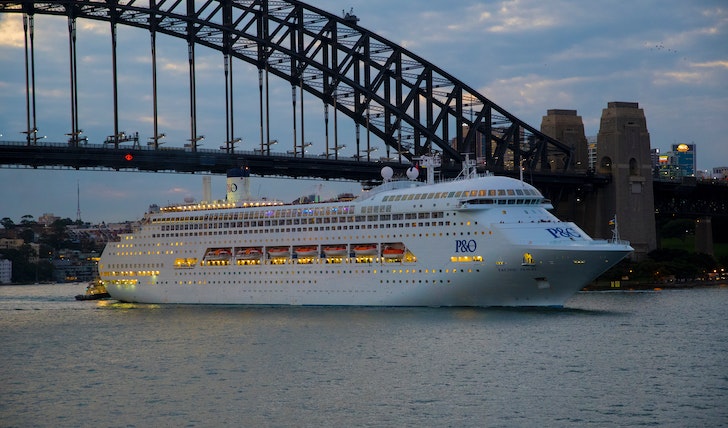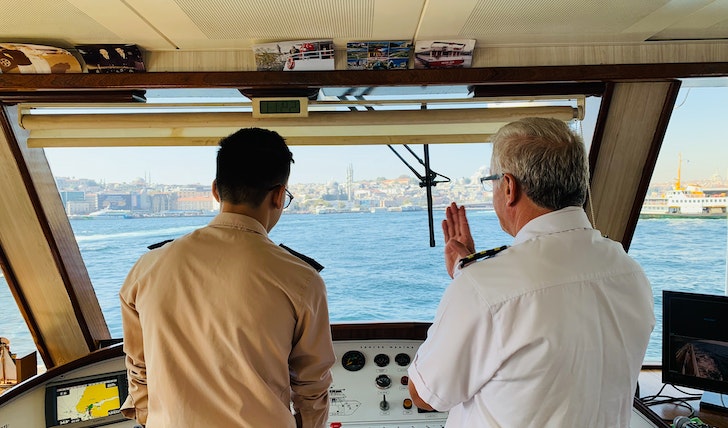Why Cruise Ships May Face New Restrictions
For many, the joy of cruising is not just in the onboard buffets or the ocean views from private balconies – it is also about the thrill of discovering new cities along the way.
The cruising industry knows this all too well, and in recent years, it is not just riding the wave but making a tsunami. With an impressive 106% rise in the number of passengers compared to 2019 levels, as reported by the Cruise Lines International Association, it’s a good time to be a stakeholder in the cruising business.
But, on the flip side, it is also causing some city officials to lose sleep.

David / Pexels / While cruise passengers are back on track, there is another side of the coin too!
Cities on the Brink
Barcelona’s sunny beaches and Amsterdam’s romantic canals have long been the highlight for many cruise tourists. But these beloved cities, along with others like Bar Harbor and the picturesque Juneau, Alaska, are now at a crossroads.
It is a classic case of loving a place too much. With the influx of tourists, the infrastructure, environment, and the very charm that attracts visitors are now under siege.
Proposed Limits: A Necessary Measure or A Step Too Far?
Given the soaring popularity of cruises, Juneau, like many port cities, has been enjoying an influx of visitors. With a projected 1.7 million tourists from cruise lines in 2023, the local economy gets a boost. But this is not without its challenges. The ripple effects of such vast numbers include strained public services, wear and tear on historic sites, and not to mention, the amplified environmental impact.

Diego / Pexels / In the summer of 2023, Barcelona’s sunny beaches and Amsterdam’s romantic canals are the most ‘overcrowded’ spots – as per the reports from the Cruise Lines International Association.
Thus, Juneau’s proposal to limit the visits of large ships (those carrying over 950 passengers) to five a day by 2024 is not a whimsical decision. It is born out of necessity. And while it sounds restrictive, it is a reflection of a broader global trend where destinations are grappling with the challenges of over-tourism.
Ecological Concerns: The Silent Alarm
Beyond the apparent logistical challenges, there is also the less visible but equally pressing concern: environmental impact. Massive cruise ships, while engineering marvels, also have sizeable carbon footprints.
When cities like Barcelona and Amsterdam contemplate bans on the largest of these vessels, it is not just about crowd control. It is about eco-control. Plus, it is about ensuring that the waters remain clean, the air breathable, and the delicate balance of local ecosystems remains undisturbed.

Dave / Pexels / Apart from overcrowding, the cruising industry is also considering the ecological concerns that come with the tourism business.
What This Means for Cruise Lovers
Does the idea of limited cruise visits paint a bleak picture for fans? Not necessarily. Think of it as the industry’s growing pains. As cruises become more popular, the model will evolve.
There is ample room for innovation. Perhaps the future holds smaller, boutique cruises with a more personalized touch. Maybe cruise liners will pivot towards greener technologies, reducing their environmental footprint.
Cruising Forward With Empathy
It is crucial for travelers, especially cruise enthusiasts, to approach this situation with understanding and empathy. Destinations are more than just picturesque backdrops for holiday photos. They are living, breathing communities.
Their sustainability and well-being are integral to preserving the beauty and charm we so deeply admire.